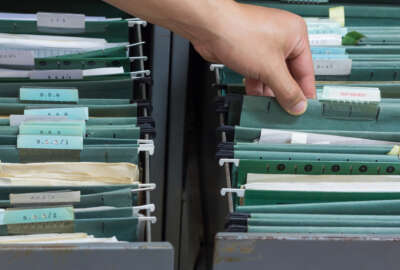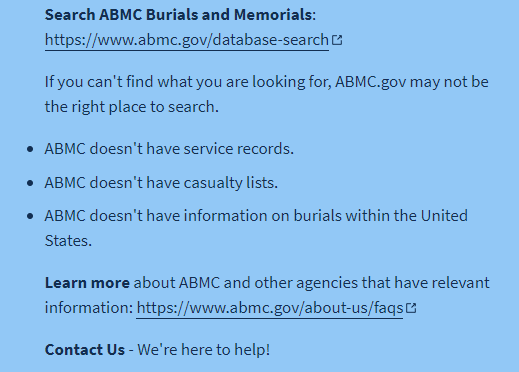

The Justice Department's Office of Information Policy launched the first iteration of its National FOIA Portal on Thursday through a redesign of its existing FO...
Subscribe to Federal Drive’s daily audio interviews on Apple Podcasts or PodcastOne.
The government’s Freedom of Information Act website has taken its first step to becoming a one-stop shop for FOIA requests governmentwide.
The Justice Department’s Office of Information Policy (OIP) launched the first iteration of its National FOIA Portal on Thursday through a redesign of its existing FOIA.gov website.
With the launch of the new portal, members of the public can now submit a FOIA request to any federal agency from a single site. The site also features new tools to help users find the agency best suited to answer their requests for information.
The move to a governmentwide portal reflects not only a surge in new FOIA requests in recent years, but also a renewed effort under the Trump administration to modernize government IT with an emphasis toward improving online government services.
There are more than 400 FOIA offices across 116 agencies, and they’re receiving a growing number of information requests. In fiscal 2017, the government received more than 800,000 FOIA requests, an increase of nearly 50 percent since 2010.
Melanie Ann Pustay, the OIP director, told reporters following the portal’s launch that the new FOIA.gov benefits both the people filing requests for government documents and the FOIA officers who process them.
“Given the diverse universe of agencies and offices, and the high number of FOIA requests, we are always looking for ways to improve its functionality,” Pustay said.
Under the new FOIA.gov revamp, users can now get an agency-specific estimate of how long their estimate will take before submitting. The average wait times come from agencies’ annual FOIA reports and will be updated each fiscal year.

To ensure FOIA requests get submitted to the appropriate program offices, the portal includes agency-specific mission statements that also specify what records they don’t have.
The American Battle Monuments Commission’s page, for example, tells users the AMBC doesn’t have military service records, casualty lists or information on burials within the United States.
The impetus for the FOIA website overhaul came from the FOIA Improvement Act, which Congress passed in 2016, and directed DoJ and the Office of Management and Budget to come up with a “consolidated online request portal that allows a member of the public to submit a request for records … to any agency from a single website.”
To stand up the new consolidated web portal, OIP worked with DoJ Chief Information Officer Joe Klimavicz and 18F, the General Services Administration’s digital services agency.
“The National FOIA Portal exemplifies our efforts to consolidate common services with the scalability and security available in a modern cloud-based platform and allows us to rapidly deliver capabilities to improve the user experience,” Klimavicz said.
Pustay said DoJ received $1.8 million in total to stand up the new governmentwide portal, which will also cover operating and maintenance costs for the rest of fiscal 2018.
Beyond the current fiscal year, Pustay said the 17 agencies that receive the bulk of FOIA requests have agreed to contribute annual funds to keep the online portal running.

Despite the portal launch, some agencies still can’t receive FOIA requests through FOIA.gov. In those cases, the site directs users on how to submit a request directly with an agency. Those gaps in service reflect the fact that more than half of agencies with FOIA offices have custom-built systems.
Pustay said the next iteration of the National FOIA portal will focus on greater interoperability between the main website and agency-specific portals.
The new-and-improved FOIA.gov marks the latest effort to make government services easier to find online.
In February, the Agriculture Department launched Farmers.gov, a website aimed at directing USDA’s customers to the services they need on a single domain, rather than navigating their way through multiple agency web pages.
In 2015, the Veterans Affairs Administration launched Vets.gov, a “digital front door” to help veterans pinpoint the services they’re looking for without having to navigate nearly 1,000 dot-gov websites.
Pustay first announced her agency was working on the National FOIA Portal last April.
The launch of the portal comes just a few days before Sunshine Week, during which government transparency groups, reporters and government officials hold events that examine the state of public transparency.
The Sunlight Foundation, a nonpartisan open-government group that worked with OMB and GSA during the development stage of the National FOIA Portal, called the revamped website “a significant improvement over the previous FOIA.gov.”
“This new FOIA.gov is the culmination of years of work by many people inside and outside of the federal government, including former Sunlighters, members of Congress and their staff, the Department of Justice, Obama administration officials, and freedom of information advocates and technologists around the country,” Alex Howard, the Sunlight Foundation’s deputy director, wrote on the organization’s website on Thursday.
Copyright © 2024 Federal News Network. All rights reserved. This website is not intended for users located within the European Economic Area.
Jory Heckman is a reporter at Federal News Network covering U.S. Postal Service, IRS, big data and technology issues.
Follow @jheckmanWFED


